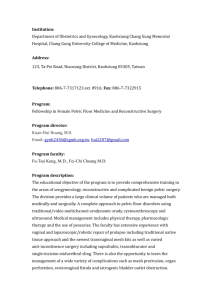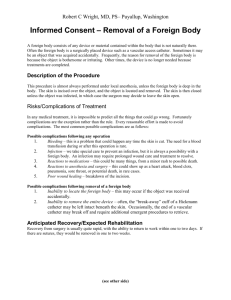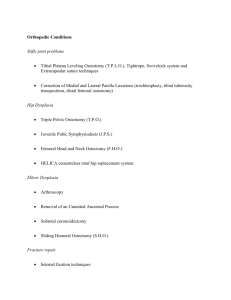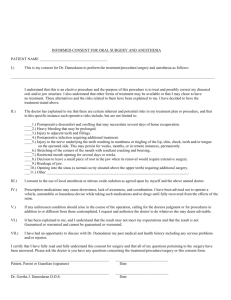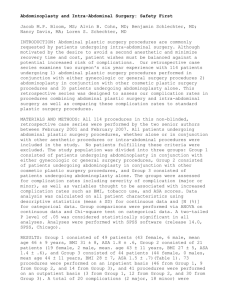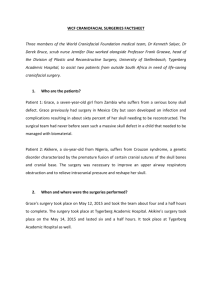Information on Craniofacial Plastic
advertisement
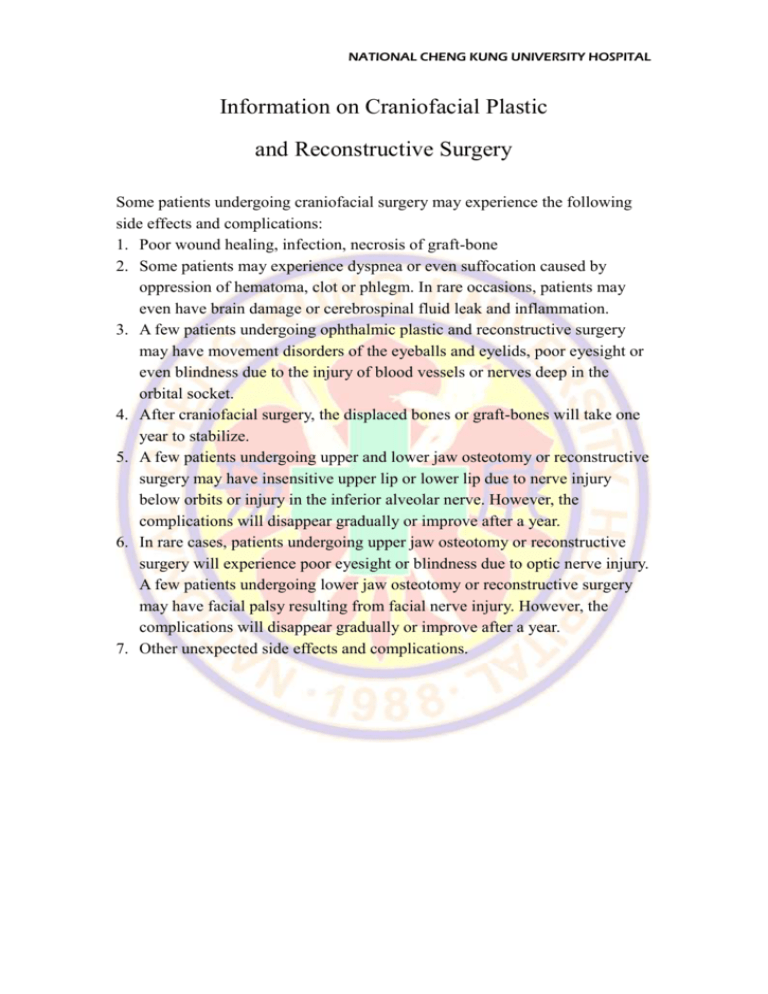
NATIONAL CHENG KUNG UNIVERSITY HOSPITAL Information on Craniofacial Plastic and Reconstructive Surgery Some patients undergoing craniofacial surgery may experience the following side effects and complications: 1. Poor wound healing, infection, necrosis of graft-bone 2. Some patients may experience dyspnea or even suffocation caused by oppression of hematoma, clot or phlegm. In rare occasions, patients may even have brain damage or cerebrospinal fluid leak and inflammation. 3. A few patients undergoing ophthalmic plastic and reconstructive surgery may have movement disorders of the eyeballs and eyelids, poor eyesight or even blindness due to the injury of blood vessels or nerves deep in the orbital socket. 4. After craniofacial surgery, the displaced bones or graft-bones will take one year to stabilize. 5. A few patients undergoing upper and lower jaw osteotomy or reconstructive surgery may have insensitive upper lip or lower lip due to nerve injury below orbits or injury in the inferior alveolar nerve. However, the complications will disappear gradually or improve after a year. 6. In rare cases, patients undergoing upper jaw osteotomy or reconstructive surgery will experience poor eyesight or blindness due to optic nerve injury. A few patients undergoing lower jaw osteotomy or reconstructive surgery may have facial palsy resulting from facial nerve injury. However, the complications will disappear gradually or improve after a year. 7. Other unexpected side effects and complications.


